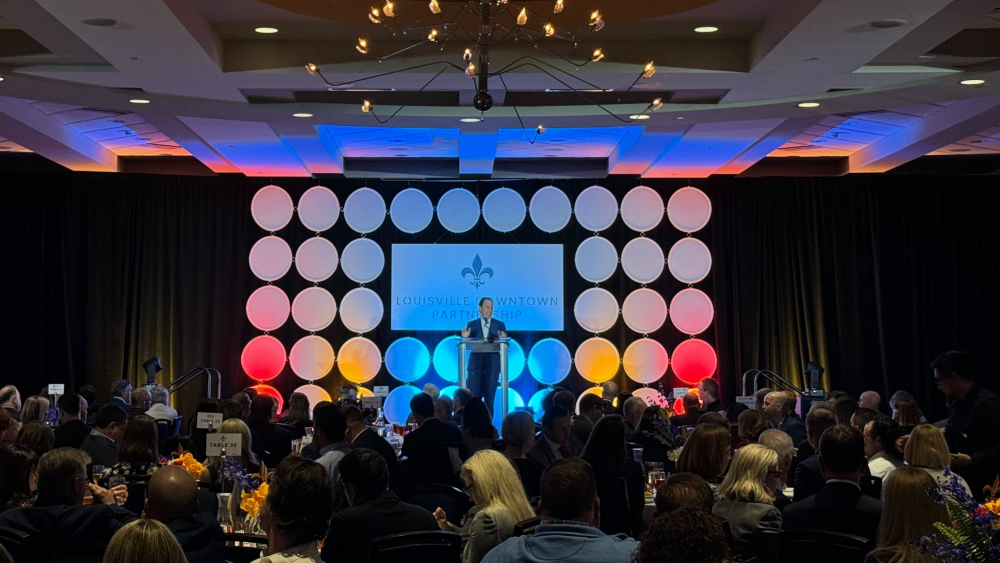On Thursday, March 27, local city + business leaders attended the 2025 State of the Downtown event. Speakers Mayor Craig Greenberg and Louisville Downtown Partnership Executive Director Rebecca Fleischaker gave a roadmap for the neighborhood’s future.
Here are some of the biggest takeaways we walked away with.
Landmark developments
Downtown Louisville has had some major completed developments recently, with more on the way. Fleischaker named the production studios at Louisville Gardens and PlayPort, and Mayor Greenberg celebrated the ongoing redesigns of Market and 9th Streets.
Downtown’s new image
Changing the perception of downtown Louisville was a major talking point for Mayor Greenberg.
“Please, ignore what your friends who have not been to downtown Louisville since 2020 are saying,” he said. “Try to overcome the Louisville tendency to focus on our challenges and not our strength.”
He went on to detail choices like relocating the LMPD headquarters to downtown, hiring more police officers, and installing more street lights as steps to address safety.
Louisville + Frankfort
Louisville’s relationship with the state legislature was another prominent point of conversation. Mayor Greenberg highlighted the legislative changes he pushed for in Frankfort, including making it easier to redevelop surface parking lots into mixed-use developments.
“The Kentucky General Assembly committed $1 billion for Louisville investments,” the mayor said, “including $200 million for the new UofL Medical Building at LouMed, and $100 million for six transformative projects right here in downtown.
Live, work, and play downtown
Both Fleischaker and the featured speaker, Cincinnati Center City Development Corporation (3CDC) President and CEO Steve Leeper, emphasized the importance of having downtown office workers in office at least four days per week.
“I know we’re all scared to talk about making employees come back to the office,” said Fleischaker. “I can’t tell you what to do. But hopefully you get enough information here today to tell your friends and coworkers the good news.”
New businesses
Fleischaker highlighted three new businesses moving their headquarters to downtown Louisville:
- Fabricated Metals
- Solyco Capital
- Steptoe + Johnson
She also praised the 1,500+ businesses that have roots in downtown and choose to stay.
Learn from our neighbors
In the final third of the presentation, Leeper detailed the many investment projects his organization oversaw in Cincinnati’s Over-the-Rhine neighborhood and encouraged Louisville to move in the same direction.










